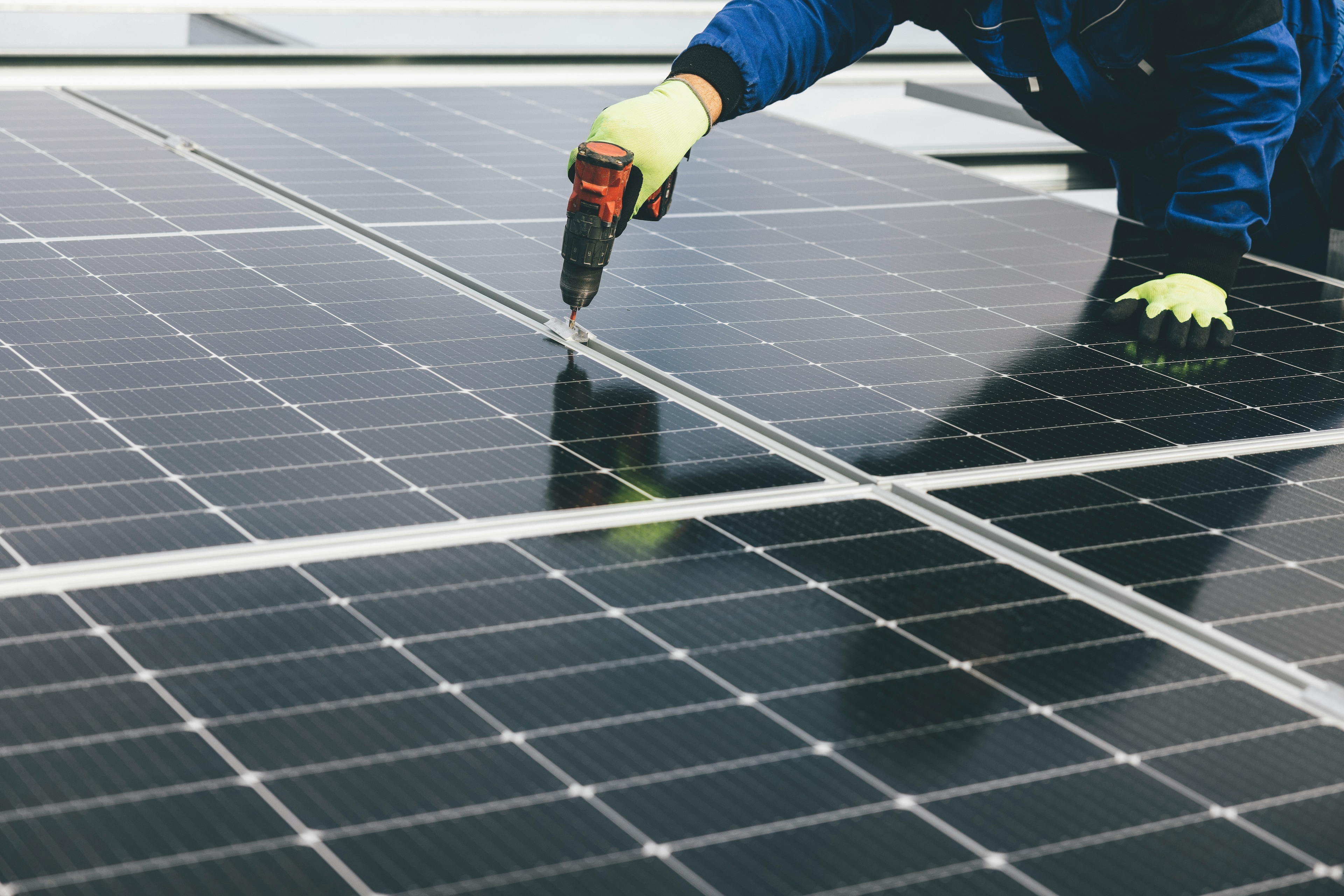How to heat up - and cool down - climate innovation

Heating and cooling technologies keep people healthy, safe and comfortable, but cause around 15% of global carbon emissions.
Image: Trane Technologies
Stay up to date:
SDG 13: Climate Action
- Heating and cooling technology for buildings create around 15% of global carbon emissions, while food loss adds 10%, according to research.
- New technologies that are helping to decarbonize these areas are increasingly being used for industry and transportation.
- Policy-makers must encourage businesses and consumers to transition to these technologies, and foster collaboration among governments, industry and NGOs in these business areas.
Heating and cooling are essential to modern life. This includes comfort control for homes and buildings, and temperature control in industrial processes. It also includes the cold chain that ensures safe delivery of food, medicine and vaccines around the world.
While heating and cooling technologies keep people healthy, safe and comfortable, they also impact the climate. According to the World Green Building Council around 28% of global CO2 emissions come from building operations, due to the energy used for heating, cooling and power. Trane Technologies' building energy management analysis, combined with data from the International Energy Agency (IEA), Project Drawdown, the Climate and Clean Air Coalition and other third-party sources, shows that 15% of global carbon emissions comes from heating and cooling buildings specifically, while another 10% comes from food loss and waste.

Rapidly rising demand for heating and cooling is also putting tremendous strain on energy systems around the world. In its Future of Cooling report, the IEA predicts that “without action to address energy efficiency, energy demand for space cooling will more than triple by 2050”.
The good news is that innovation already exists to increase energy efficiency and decarbonize heating, cooling and ventilation, while creating comfortable, healthy indoor spaces. If we can accelerate adoption of these technologies and scale them globally, it will move us toward the UNFCC goal of net-zero carbon emissions by 2050 at the latest. The following solutions will play a major role in shaping a more sustainable future for the global economy.
"Innovation already exists to increase energy efficiency and decarbonize heating, cooling and ventilation, while creating comfortable, healthy indoor spaces."
”Decarbonization in action in industry
Heat recovery can be applied in innovative ways to maximize sustainability.
The Dutch city of Aalsmeer, just 30 minutes from Amsterdam, has set an impressive goal of becoming energy-neutral by 2040. In line with this goal, the municipality, NorthC Datacenters, a local sports complex, a childcare centre and a nearby plant nursery have created Energy Hub Aalsmeer.
The datacentre was emitting its waste heat into the air, while the sports complex and plant nursery both use gas-fired boilers. The Trane Technologies team developed a custom closed loop system to recover waste heat from the NorthC Datacenter and supply heated water to the other locations. Cooled water is returned back to the data centre, offsetting its cooling load. Through this symbiotic relationship, these groups can meet sustainability targets while reducing emissions and costs.
Large commercial and industrial buildings can also significantly reduce their energy use and carbon emissions by combining heating and cooling into one system, eliminating the need for gas boilers. The fully electric heat-pump systems used to do this recover and repurpose heat and are 350% more efficient than most gas boiler systems. When drawing from a green grid, they can be a zero-emissions solution for buildings and cities.
Other decarbonization technologies, such as thermal storage and connected controls for highly-efficient smart buildings, can be used to keep people healthy and comfortable, while reducing energy use and emissions. The US Department of Energy, for example, recently invested $61 million in 10 pilot projects to create "connected communities" of buildings with smart controls, sensors and analytics capabilities that will help to reduce energy use, costs and emissions.
Accept our marketing cookies to access this content.
These cookies are currently disabled in your browser.
Carbon reduction in the cold chain
Electrification of the cold chain will also contribute to the net-zero emissions goal. The cold chain requires refrigeration technologies to make sure critical cargo like food and pharmaceuticals remains at required temperatures throughout end-to-end logistics. Today, many refrigerated fleets are adopting electric technologies to reduce their environmental impact.
Unlike typical refrigeration units that run off a vehicle’s engine and rely on a separate diesel/petrol generator to operate, electrically powered refrigerated units avoid fossil fuel use and emissions. These units also continue to run reliably even if the vehicle is not in operation. This ensures that food stays fresh and avoids emissions caused by food waste.
Technologies like these are helping Trane Technologies to meet our Gigaton Challenge, which commits to reducing our customers’ carbon emissions by a billion metric tons by 2030. While this goal is ambitious, we’re confident we’ll reach it because we’re already seeing the impact climate innovation can have on reducing emissions.
What’s the World Economic Forum doing about climate change?
We can accelerate the adoption of sustainable heating and cooling by advancing policies that encourage businesses and consumers to transition to decarbonization technologies. Fostering collaboration among governments, industry and NGOs will also be key. Together we can boldly challenge what’s possible for a sustainable world.
Don't miss any update on this topic
Create a free account and access your personalized content collection with our latest publications and analyses.
License and Republishing
World Economic Forum articles may be republished in accordance with the Creative Commons Attribution-NonCommercial-NoDerivatives 4.0 International Public License, and in accordance with our Terms of Use.
The views expressed in this article are those of the author alone and not the World Economic Forum.
Related topics:
Forum Stories newsletter
Bringing you weekly curated insights and analysis on the global issues that matter.
More on Emerging TechnologiesSee all
John Goodson
August 28, 2025
David Sullivan
August 26, 2025
Hannes Klöpper
August 26, 2025
Kai Zenner and Benedikt Gieger
August 25, 2025
Lim Chow-Kiat
August 21, 2025
Charles Bourgault and Sarah Moin
August 19, 2025





